2025 Blacktown International Sports Park: Timeflows
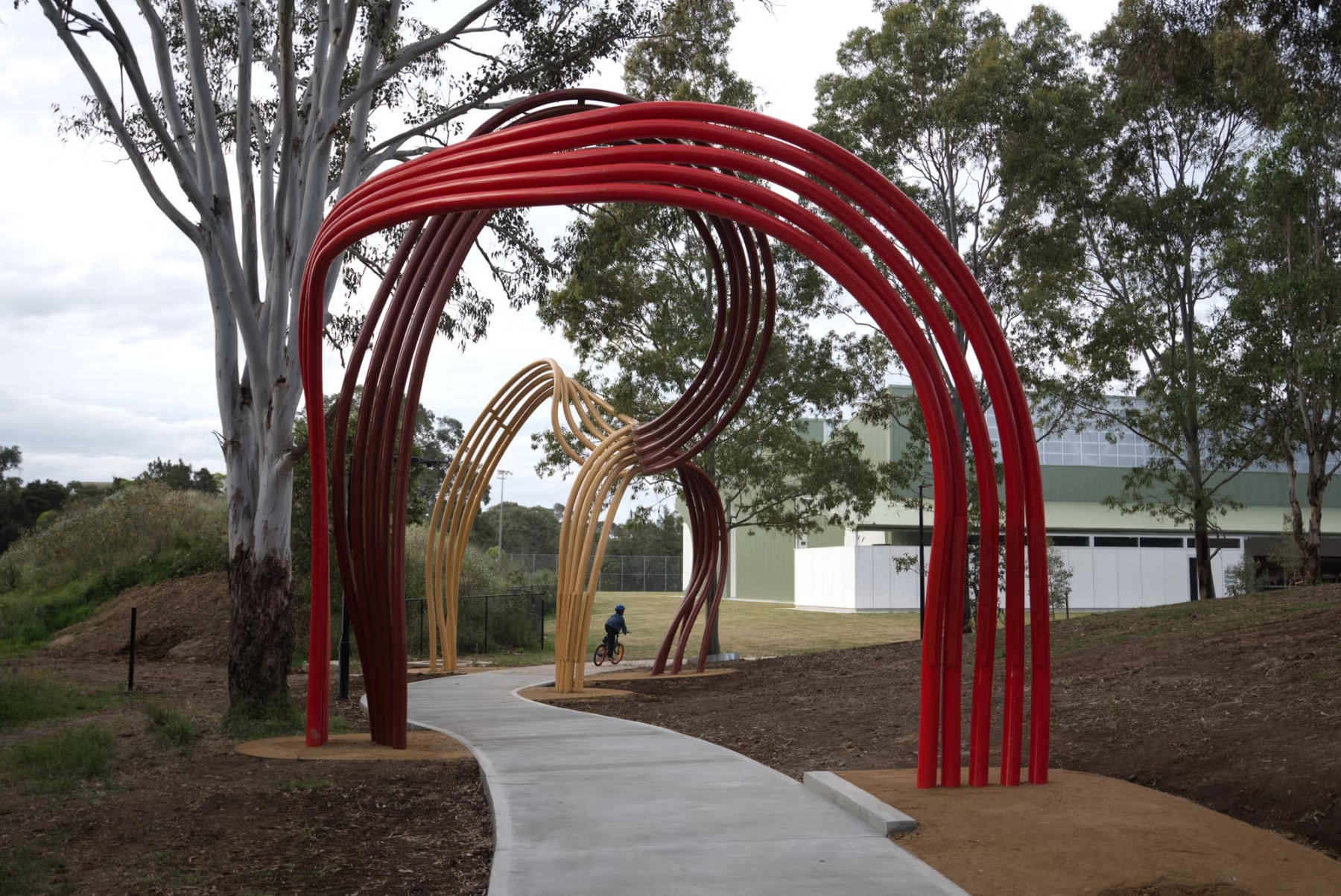
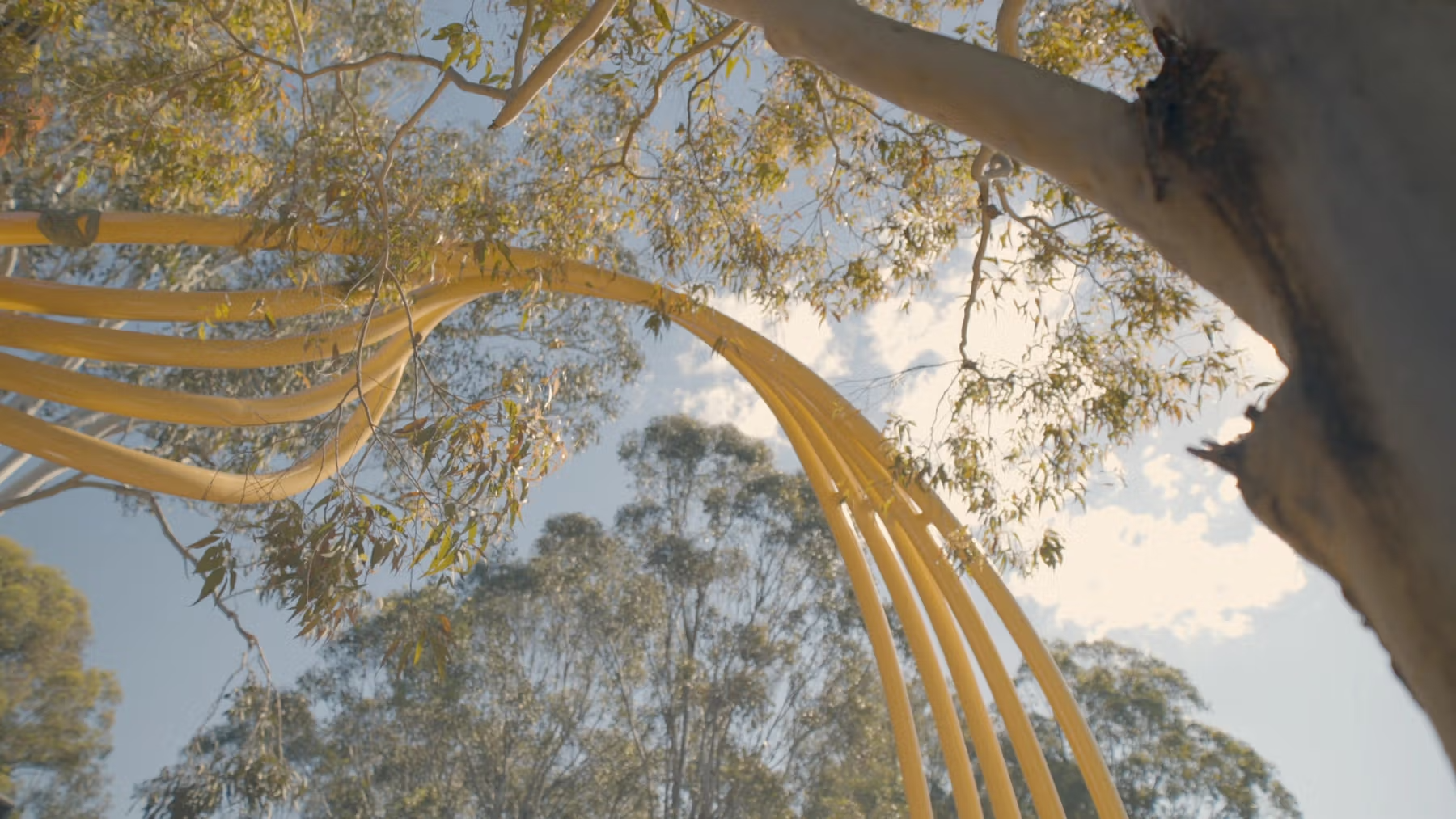

Timeflows is a public artwork by Michael Cohen, Chris Fox and Shay Tobin in Blacktown International Sports Park which examines Ngurra (Dharug Country) in terms of durational landform change and long-term inhabitation by First Nations people.
This inhabitation in the local area, in the neighbouring Cumberland Plain, and in the Sydney Basin more broadly, has continued for such a ‘deep time’ period that it is hard for a single human to grasp.
Dharug people considered the ancient uplift of the Lapstone Structural Complex as the staircase from the plains to the mountains. Stone tool artefacts that date back up to 47,000 years have been found nearby at Cranebrook Terrace.
Layers of sedimentation, like chronological contours, can tell a multitude of stories about the flows of time. For this artwork we brought together geological and topographic data sets from this area. Through computational modelling, we generated the looming forms that appear to emerge from the earth.
Passing beneath them, you will see that each form speaks to a different era. Yet each reflects the continuity of Ngurra, and of Dharug people.
https://blacktownarts.com.au/our-collections/public-art/timeflows/
2025 Blackheath Station: Garada Garrayura (Black Cockatoo Sky)


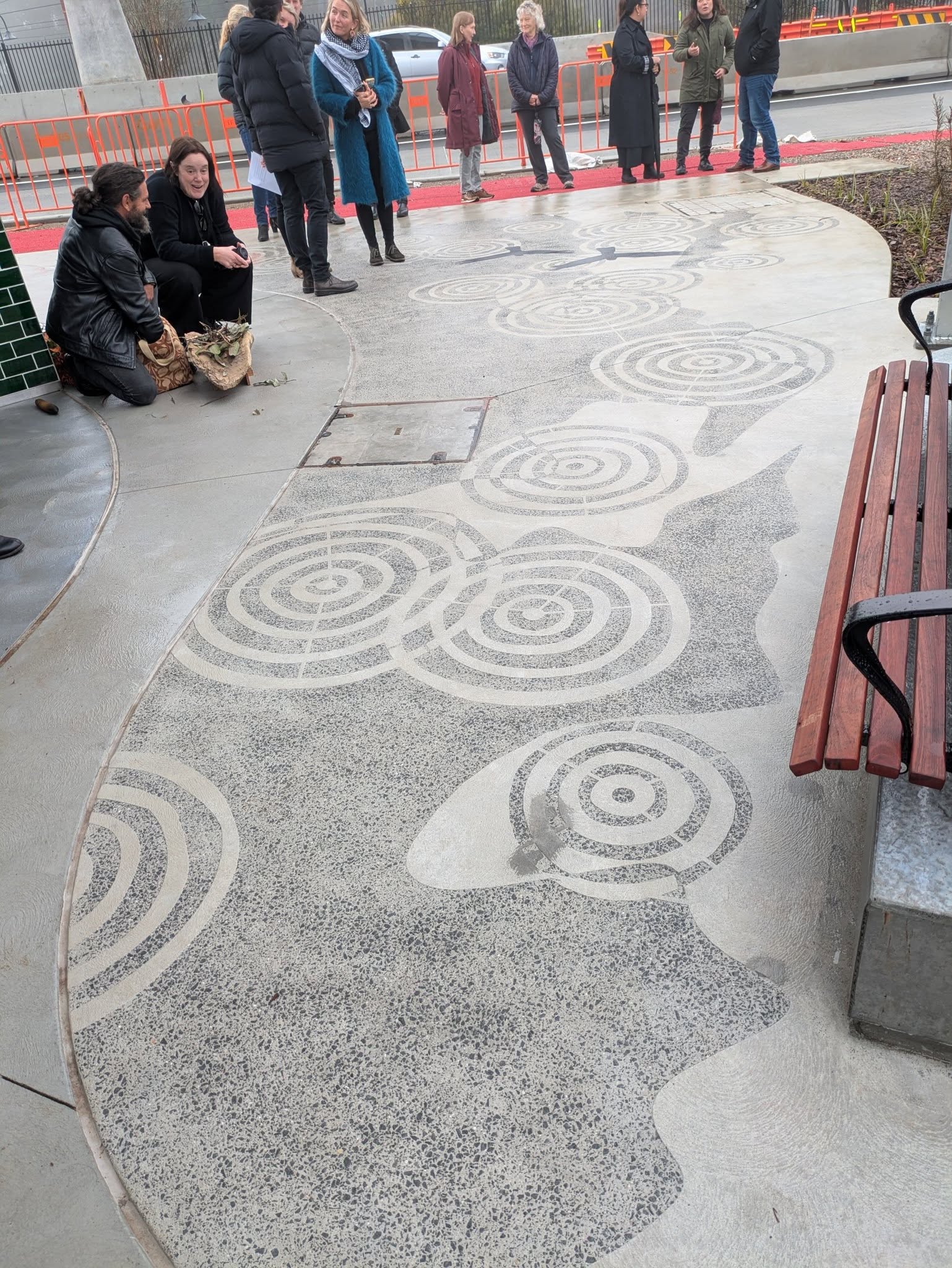
Atop the mountains, clouds descend to meet the earth, weaving mist into flowing water. Above the ridgeline, concentric rings evoke rain drops in water, ripples, expanding, intersecting, and converging. Traditionally, concentric rings symbolise community and gathering. Here they reflect how our mountain communities continue to connect and intertwine across the landscape.
The Great Western Highway traces the ancient routes walked by Indigenous peoples along the ridges of the Blue Mountains. It’s no coincidence that both traditional custodians and modern travellers have followed similar routes between the Sydney Basin and the Bathurst Plains — the landscape itself guides movement along the path of least resistance. This ancient route has long connected the Dharug, Gundungurra and Wiradjuri peoples, enabling movement and exchange between communities for eons. In this artwork, the ridgeline forms a natural boundary between the cliff tops and valleys, stretching from Medlow Bath to Mount Victoria.
Garada (Black cockatoos), ever-present in the upper mountains, represent the ancestors. They fly over Ngurra (Country). They watch over us.
2024 Western Sydney Parklands: Gabgrugal Yana
Gabrugal Yana is an 11km bush walk that connects you with Dharug Country and culture, and the story of six Dharug seasons, told through artwork created by First Nations artists: Shay Tobin, Djon Mundine, Jamie Eastwood, Corina Wayali, Gili Norman, and Vanessa Dyubi Gili Possum .
Dharug seasons relate to events such as the flowering of plants, changes in weather patterns and the lifecycles of birds and animals. These six seasons are not based on western calendar dates (eg. summer, autumn, winter and spring) and have been developed from contemporary observations.
“Our Dharug Ancestors observed subtle indicators of seasonal change such as in temperature, clouds, wind, flora and fauna which assisted in knowing when to burn Country, hunt certain foods and to live in harmony with the Land.” — Naa Nora (to see Country) Dharug exhibition book 2012
Today Dharug people are in the sensitive process of reclaiming knowledge, revitalising language and reawakening stories. Gabrugal Yana is part of that journey.
https://www.greatersydneyparklands.nsw.gov.au/explore/gabrugal-yana/gabrugal-yana-six-dharug-seasons

Bunul Marray – warm and wet
Around January – February
Bunnul (sunshine)
Marray (wet)
Warmer days bring the mugadung (blue tongue or “sleepy” lizard) who carry energy and new life. At the hottest time of year, mugadung gives birth to new lizard life. They are passive creatures but when threatened, open their mouths wide and stick out their broad blue tongues. They have strong jaws that crush slow moving prey such as beetles and snails.

Yuruga Burra – hot and thirsty
Around March – April
Yuruga (hot)
Burra (sky)
The annual migration of barra (eel) from the rivers to the ocean indicates the beginning of this season. This is a signal for people from all over to gather. Barra mimic colours of their environment, such as browns, greens and yellows.

Bayin Dyarra – wet and cooler
Around May – June
Bayin (cool)
Dyarra (red)
During this time, dyarraba (firestick) cultural burning is the sustainable fire practice used to manage and heal ngurra (Country). During dyarraba, buru (kangaroo) run from the burning grass.

Dagara – cold and frosty
Around July – August
Dagara (cold)
The distinctive call of garad (black cockatoo) signals the coming of rain. The presence of garad reminds us our Ancestors are part of Country and still with us. The decisions we make today need to align with the values of our Ancestors.

Dugara Guwara – cold and windy
Around September – October
Dugara (very cold)
Guwara (windy)
During this season, maliya (the diamond python) wakes from its hibernation and seek its mate.Maliya is a common species in the Western Sydney plains and Blue Mountains. They are a known food source for Dharug, but mainly when other foods are unavailable.
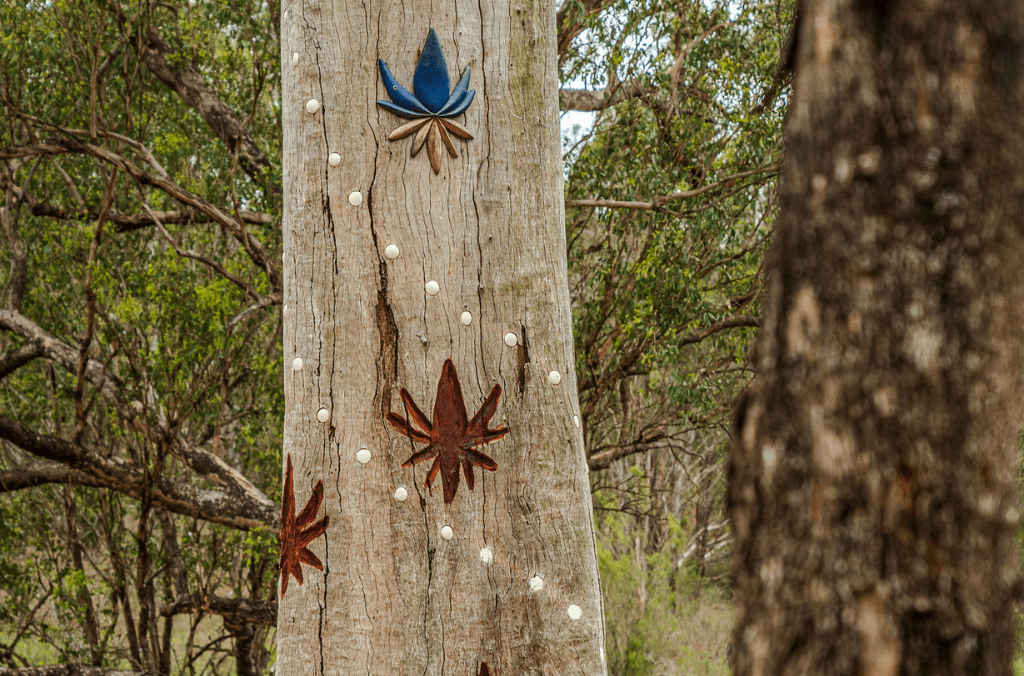
Bayin Gura – cool getting warmer
Around November – December
Bayin (cool)
Gura (warm)
The dianella plant blooms at the beginning of the warmer summer months. Its flower has a blue/purple and yellow pattern. Dianella leaves can be dried and wet again to make them easier to bend and weave into string, nets, bags, baskets and traps. The berries are a popular bush tucker food (do not eat too many though). They are also used to make purple colour dye.
2023 Blackheath Station: Muru (Pathways)
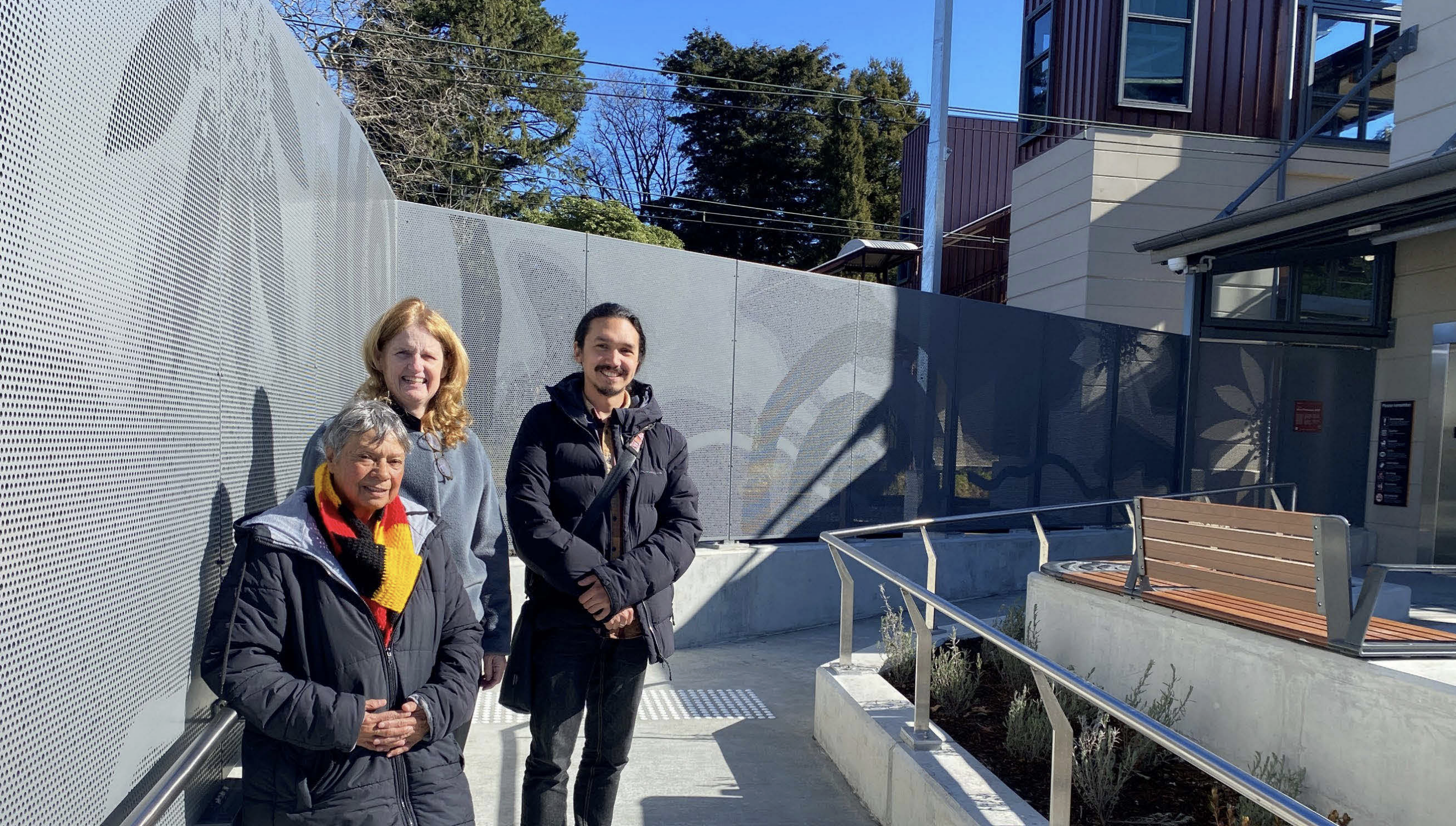


The Great Western Highway runs along the ancient pathways indigenous to the ridges of the Blue Mountains. It is no coincidence that the modern and traditional movements from the Sydney Basin to the Bathurst Plains follow a similar geology as the motivations for both peoples reduce to the least inhibited path. Blackheath derives its name from the impressions made by those explorers seeing the native bushland in a blackened state, though the indigenous communities surrounding the area used these paths to collect the bee honey made from the flannel flowers and other native flora that we see colouring the landscape today. These paths also form a connection between the neighbouring Dhaurg, Gundungurra and Wiradjuri Peoples.
Featured in the artwork is a topographical view of the landscape in the direction of the viewer. The ridge that runs from the Sydney Basin to the Bathurst Plains can be seen running above the Great Western Highway in the image.
This artwork shows the indigenous significance of these ancient routes to the people moving across the mountains today. This is a connection to county that anyone can experience once they are made away of it.
2022 Springwood Hub: Communal Waters
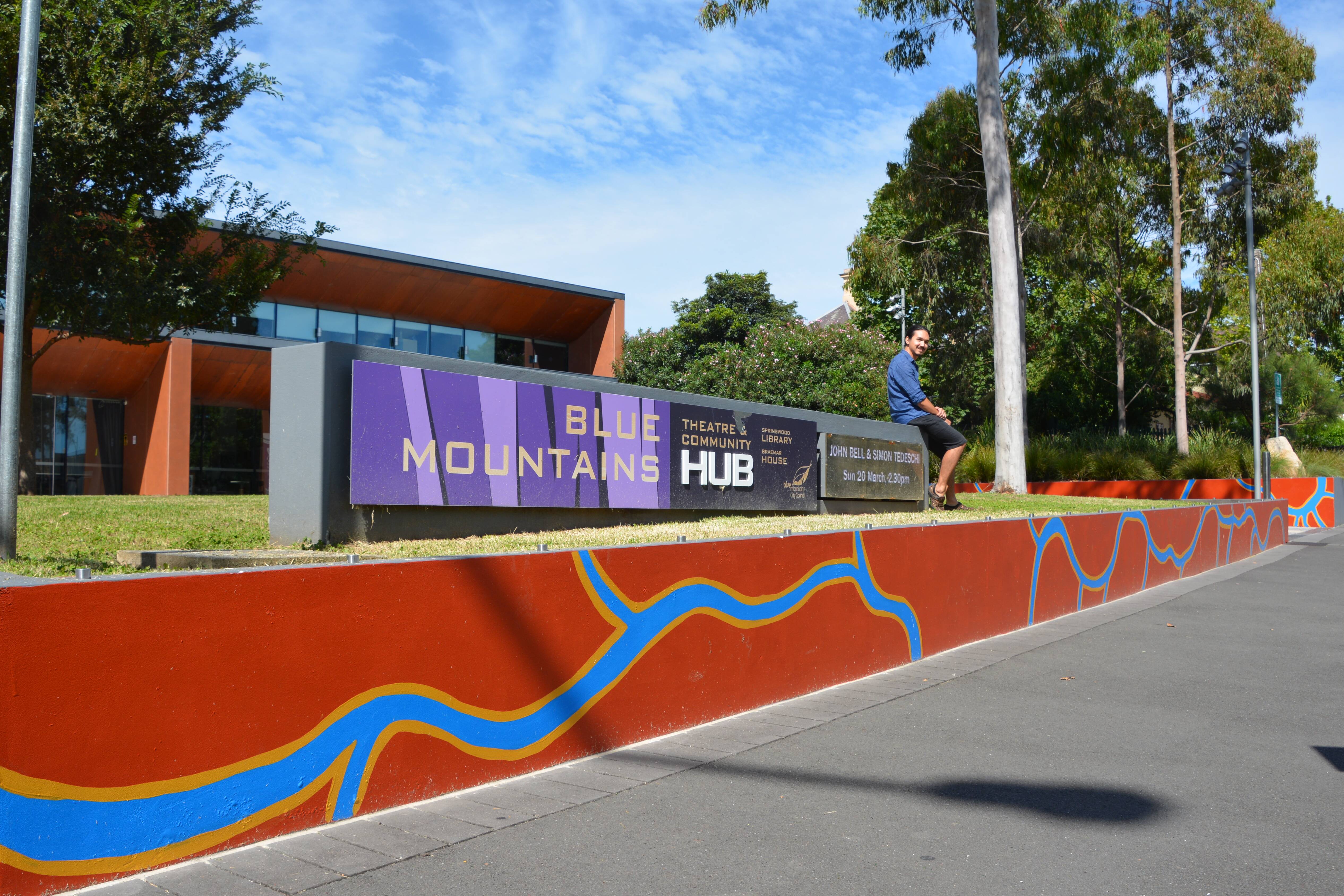

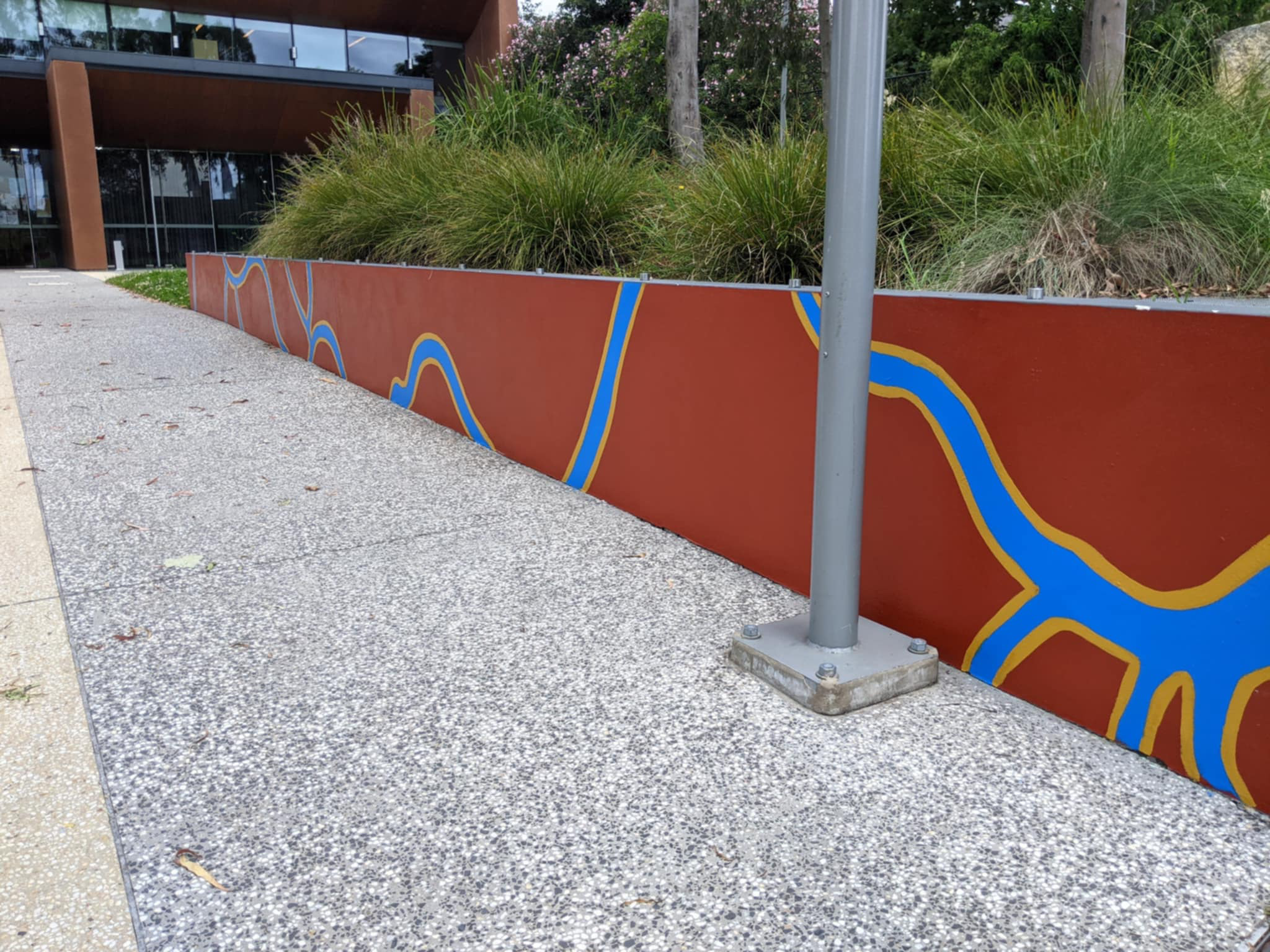
The creeks and streams that run through the surrounding bushland were once significant water sources for the people living off country, the Oryang (also written as Aurang) of the Dharug nation, and the native plants and animals which we still see today.
Today, the native flora and fauna still interact with Springwood Creek as they have for eons but the creek’s role to its people and its surrounding community has become more abstract. This is the key inspiration for this artwork.
The design is directly traced from the topography of Springwood and its northern creeks. The central running pattern moving from Birdwood Gully to the Grose River, is Springwood Creek with off-shooting streams. Due to the non-linear structure of the containment walls, the creek pattern has been adapted to fit this space.
The colours used in the artwork are chosen to represent rock and water. Naturally, blue depicts water and is outlined with yellow ochre to represent the sandstone banks. The colour choice for the main background is yellow to compliment the sandstone banks but other colour choices have been provided.
Note that the choice of colour and pattern, while motivated by purely natural means, has an indigenous aesthetic that is both literal and cultural. This is indigenous design, taking inspiration from observation and experience of the natural world.
2021 Ace/Parramatta: Barramatta Badu (Parramatta Water)


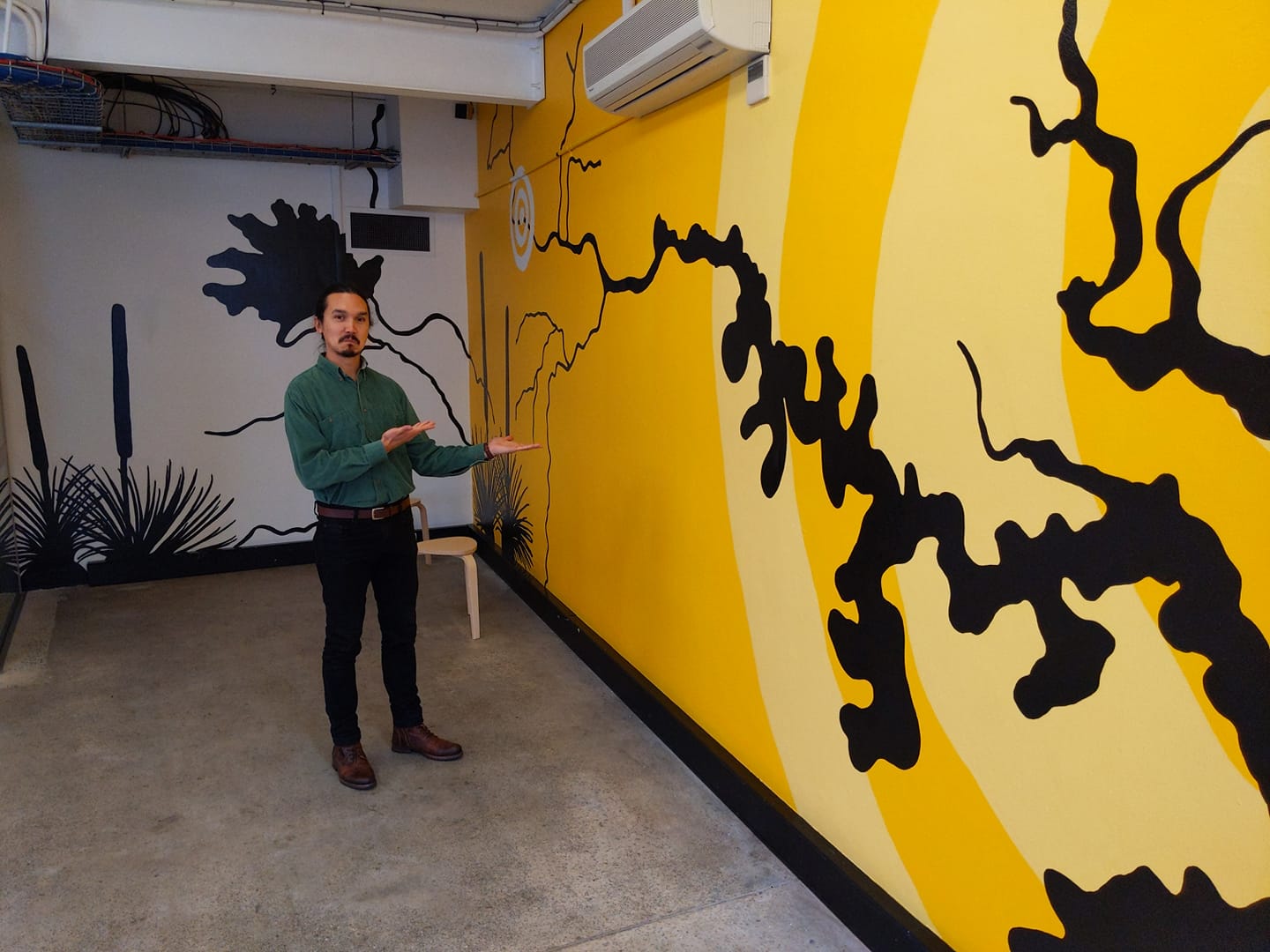
Modernity is constantly challenged especially in recent times. The 2019 bushfires devastated the land and then Covid-19 devastated society but the resilience of both the land and its people holds true. Those who have been to fire torn locations shortly after the fires would behold a miracle in the bright yellows and green of the grass tree shooting out of their charcoal stumps. In history, the shaft of spears was made from the stems of grass trees and the leaves used as fire starters, a tool for caring for county.
The water recently known as Parramatta river runs through the history of the Darug. This river first cut its way into the sandstone and shale valley 15-29 million years before it was named. The people who first lived from the river saw Burramatta “- the place of the eels” as a meeting place. The fresh water and salt water people met here by following the waters. Now this place is known as Parramatta, and still used as a place of meeting for the many cultures of Sydney.
Like the land after the fires, people during and after Covid-19 will need caring and it is places like I.C.E. that can provide a meeting place to regenerate the culture of Parramatta.